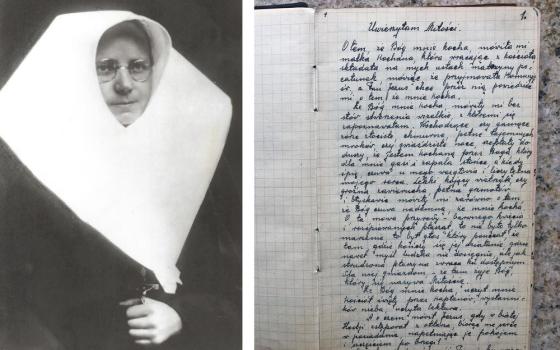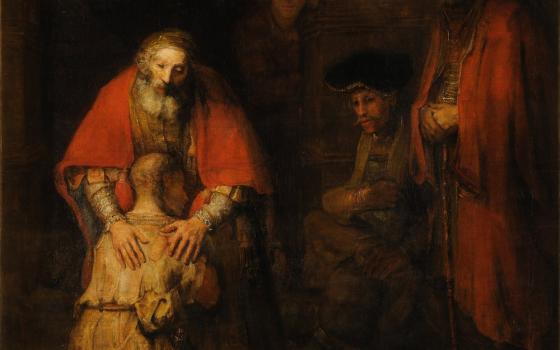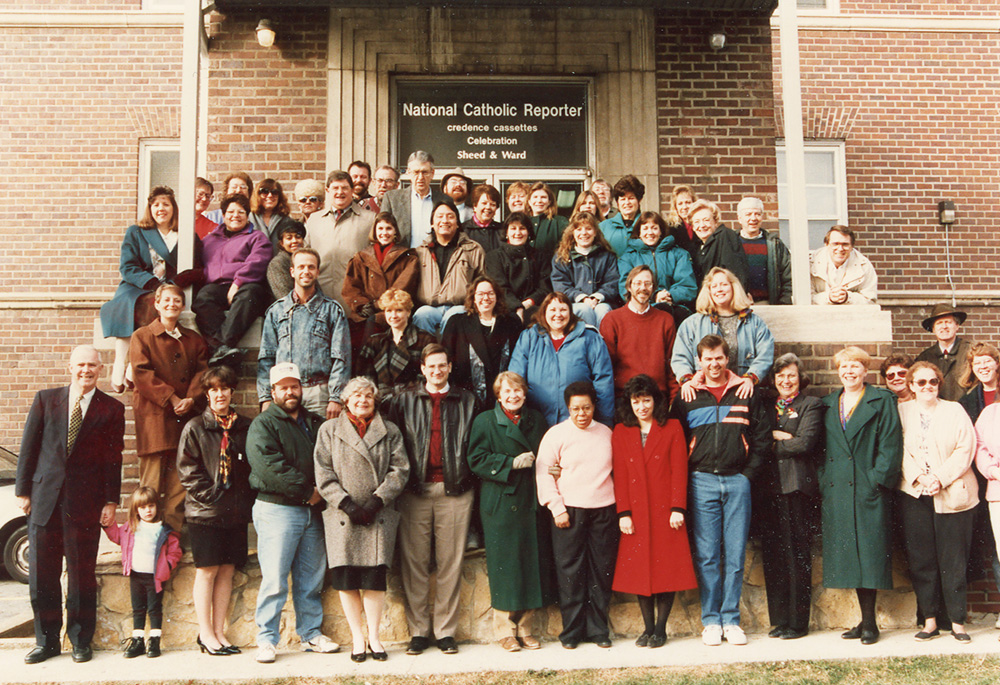
The staff of the National Catholic Reporter Publishing Company is pictured in this 1994 Christmas photo, taken outside the company's headquarters in Kansas City, Missouri. A new book outlines the 60-year history of the company. (NCR file photo)
Editor's note: Today is the release of Beacon of Justice, Community, and Hope: How NCR has sustained independent journalism from Vatican II to Pope Francis, the new book outlining the 60-year history of the National Catholic Reporter Publishing Company. Below is the foreword, written by NCR editor/publisher emeritus, Thomas C. Fox. The foreword has been reprinted with permission. You can find more information about the book and a purchase link here.
In the beginning, a combination of religious faith and the desire to put their journalism skills to work in service to their church drew a handful of lay Catholics together and led to the launching of the National Catholic Reporter Publishing Company.
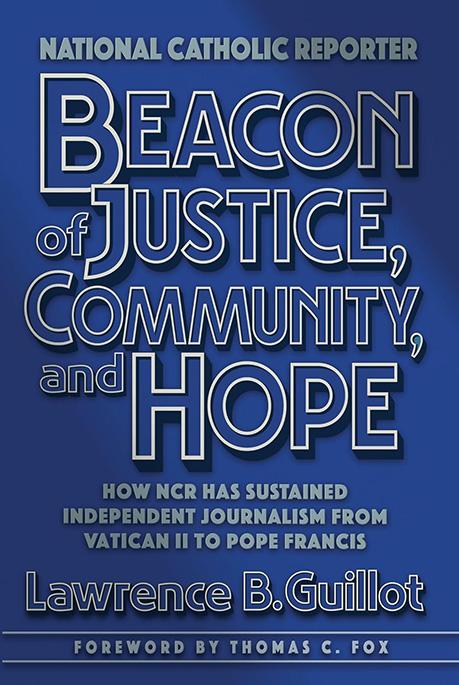
Book cover to Beacon of Justice, Community, and Hope
Notably, it was a time of high idealism. During the mid-1960s, there was a widespread belief that good people working together could make a difference and even change the course of history. For some Catholics gathered in Kansas City, Missouri, making that difference would mean quality, lay-led journalism built on solid reporting.
Their publishing project would be unlike others that viewed the church through saccharine-coated lenses while fawning before their local bishops, who most often also served as publishers of the papers. NCR's mostly unspoken motto has been simple and taken from the Gospel of John: "The truth will set you free." It was easy for Catholics to be inspired during those halcyon days. Their church, asleep for centuries and resisting engagement with a "secular" world, was once again re-engaging.
From 1962 through 1965, top church leaders, under the aegis of the Second Vatican Council, gathered in Rome and called for church reform, peace, and justice in the wider world. At that moment, it seemed like anything could be achieved. Understanding NCR's roots during those times is essential to understanding the fullness of the NCR journalism mission, the commitments of its staff and board of directors, and the power behind its endurance for nearly six decades now.
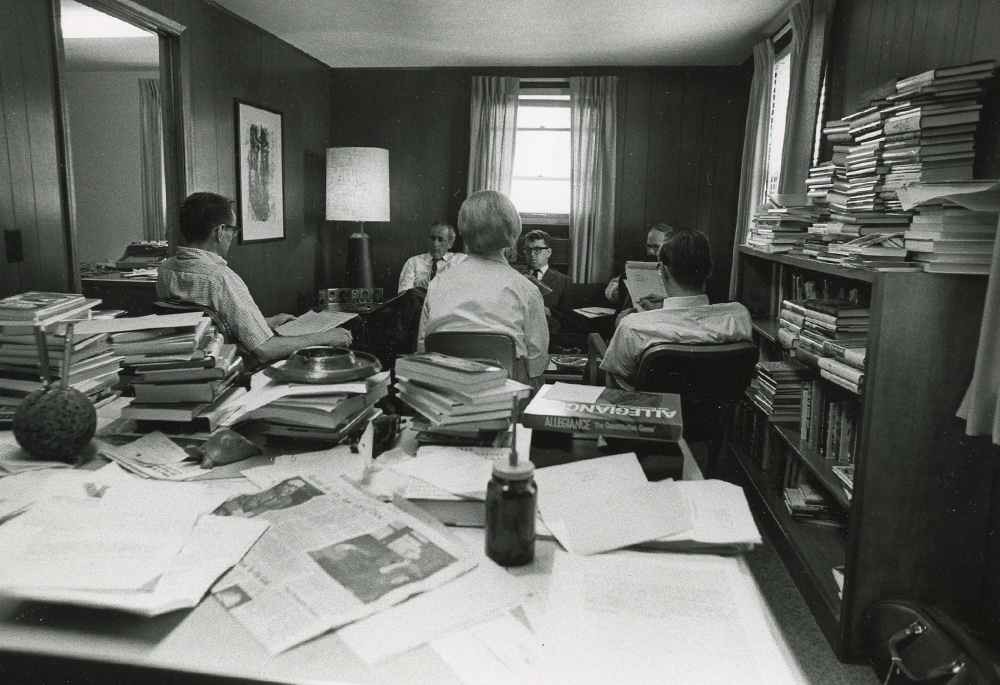
NCR staff are pictured inside the company's headquarters in Kansas City, Missouri, in this 1968 photo. NCR's first issue appeared in October 1964, amid the Second Vatican Council. (Jack Kenward)
NCR's first issue appeared in October 1964, in the middle of the council. One of NCR's first editorial marching orders was to report and help give meaning to the council by reporting it, providing an open platform to hammer out ideas, and tracking roadblocks in the renewal path forward. This book tells a unique journalism story; it tells the story of an unusual Kansas City-based nonprofit organization with modest resources and immodest ambitions. This book tells a human tale characterized by frailty, failure, strength, and success. Strikingly and perhaps unintentionally, it offers a history of the Catholic Church as it passes through one of the most vibrant and consequential periods in its history.
I came of age, turning 21, in 1965, the final year of the Second Vatican Council. It was fortunate timing and an explosive time to begin a career in journalism. Longevity has also been a blessing. Life has allowed me some six decades of association with NCR. That association started in 1966 when I was 22-years-old, enthusiastic and idealistic and in Vietnam, where I had come to work with war-displaced rice farmers.

Art Winter, who served on NCR's editorial staff from 1966-1974 and later edited Celebration, NCR's liturgy service, is pictured seated with other staff members of the NCR Publishing Company in 1978, at NCR's offices in Kansas City, Missouri. (NCR file photo)
Through Michael Novak, then a humanities professor at Stanford University, from which I had just graduated, I made contact with NCR Editor Robert Hoyt. He quickly asked me to begin reporting for NCR from Vietnam. My first published byline was from Saigon, Vietnam, in the summer of 1966. It was then I learned the importance of a good editor. My very modest reports began appearing in fine prose on the NCR pages.
Arthur Jones, then NCR editor, convinced me in 1980 to move from Washington, D.C., where I was an editor at the Washington Star, to Kansas City to succeed him. He became a mentor and a decades-long friend.
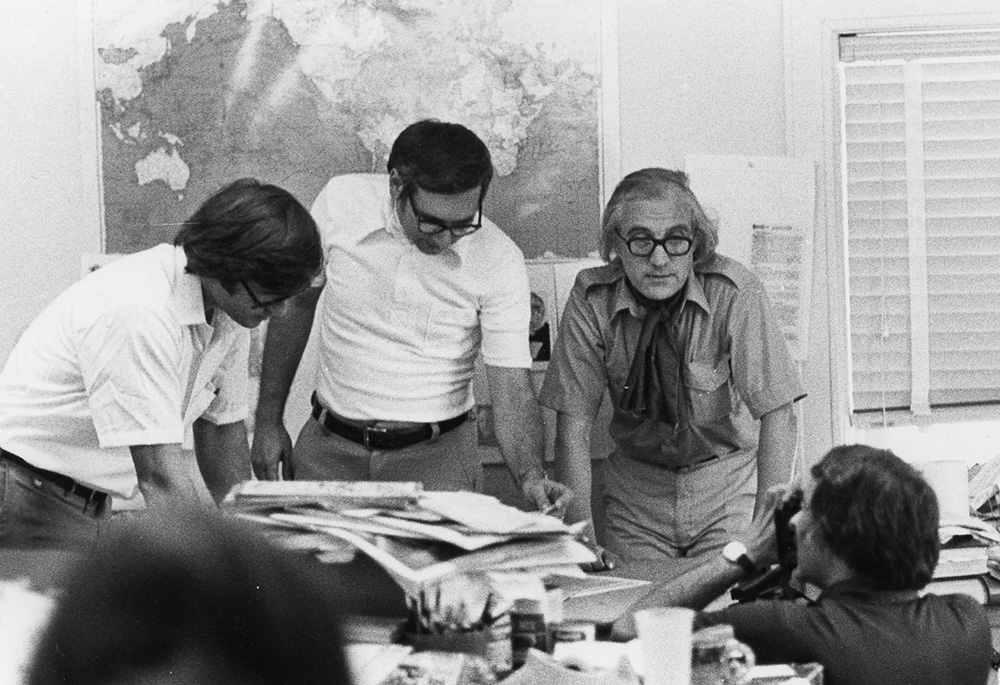
From left: Tom Fox, Jason Petosa and Arthur Jones are pictured inside NCR's Kansas City headquarters in July 1980; all three have served as NCR publisher. (NCR photo/Pam Bauer)
The origins of this book go back to Jones, who, in 2014, in preparation for NCR's 50th anniversary, wrote an NCR history, National Catholic Reporter at Fifty: The Story of the Pioneering Paper and Its Editors. That book focused on the work of NCR's eight editors to that point. Largely left out was the broader story of the NCR publishing company, including its critical junctures at the hands of its board of directors and the work of its wider staff over the decades. The stories behind the other NCR company efforts, including magazines, newsletters, parish education materials, and book publishing efforts, were mostly missing in Jones' well-received opus. These publications were essential to building a more pastoral church and helped the company's bottom line. Jones' book concluded with an essay on the broader company's work, an epilogue by author Larry Guillot.
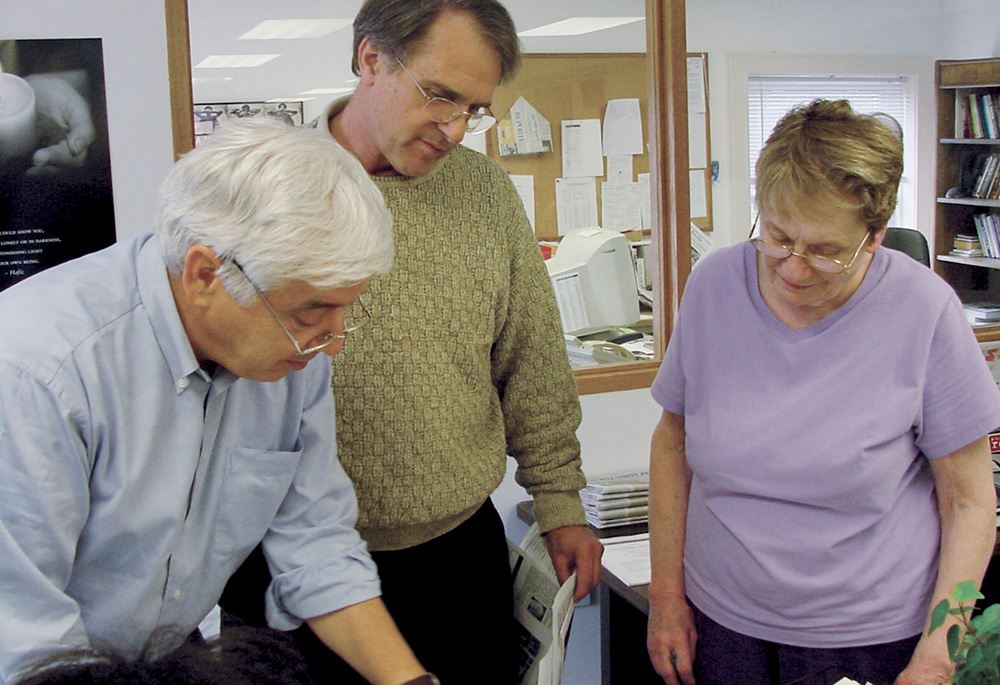
Then-NCR editor Tom Roberts, publisher Tom Fox and copy editor Patty McCarty review pages before sending them to Tribune Publishing to be printed, in this 2004 photo. (NCR photo/Toni-Ann Ortiz)
I've served as NCR editor and publisher more than once. When I returned as publisher in 2018, I asked Guillot to expand his epilogue with further research. He agreed and worked on the project for several years. He read previous attempts to chart or sketch the NCR history, all limited in scope or lacking access to primary sources. He pored through decades of NCR board reports, meeting minutes, financial records, and hundreds of NCR articles and publications. He also interviewed current and past board members and NCR staff to add detail and flavor. Until this accounting, no NCR history has revealed the company's critical financial struggles and multiple near-death experiences. Nor had anyone had the opportunity to explore the stories behind the corporation's move into digital publishing and sustained fundraising. The generosity of its many supporters enabled these two defining moves.
Guillot is uniquely qualified to author this history. He knew NCR's founders personally. Some were his friends. He was in Kansas City, his home and workplace, at the birth of NCR. Guillot was also in an excellent position to write this history, Beacon of Justice, Community, and Hope. Besides knowing many company executives and staff, he knows journalism, church, and the nonprofit world, having worked in all three for many years. Guillot studied in Rome during Vatican II, has a doctorate in ecumenical theology, and has published widely in religious and secular publications. He knows nonprofit organizations from the inside out. He led several nonprofit organizations. He has served as executive director of the Center for Management Assistance, an innovative consulting agency designed to serve and shape nonprofit organizations. Finally, he has taught graduate university courses on nonprofit organizations for over 20 years.
This book tells a unique journalism story; it tells the story of an unusual Kansas City-based nonprofit organization with modest resources and immodest ambitions. This book tells a human tale characterized by frailty, failure, strength, and success.
Each part ends with his assessment of how NCR managed and transitioned through a particular period in time. I have known Guillot for years and know him to be a person of great integrity. When I asked him to write this history, I told him to show no favor and be guided solely by the facts he would uncover. I believe this is what he has done. His book now joins others filling out the post-Vatican II/Pope Francis church landscape. It is essential to Catholic history and the story of NCR's role to report that history. Guillot has written a fascinating tale, one likely to grip the attention of the many NCR readers and supporters who often say, "NCR is my lifeline to the church." It will also be an encouraging read for many who believe lay Catholics must be more significant in directing church events and history. They will find that this book provides examples, encouragement, and a more profound background on the mission of the independent, value-driven journalism that NCR has provided over the decades.

A banner celebrating the National Catholic Reporter's 50th anniversary is seen on the company's headquarters in Kansas City, Missouri. (NCR photo/Teresa Malcolm)
I like to think of NCR, the people and the company, past and present, as active community builders, pockets of forward-thinking, Gospel-based Catholics sowing new seeds in the broader church. These Catholics recognize the urgency of further church reform, greater inclusion of women in church leadership, and a wider outreach, especially to people who are poor and needy. These Catholics continue to act as catalysts for the vital reform initiatives that began at Vatican II, have developed since, and must continue to advance.
I have watched the work of the NCR company, its staff, and its board. I've witnessed their dedication and their determination to serve the wider church. I've seen their unpretentious faith and compassion for one another and the wider church. For generations now, the National Catholic Reporter Publishing Company has been an audacious and highly entrepreneurial nonprofit organization, the work of a relatively small number of people. In the end, as I have witnessed, their work has been a collective act of love.
Advertisement
Over the decades, I've heard it repeatedly from readers and supporters: "NCR," they say, "gives me hope." No other remark gives me such satisfaction. As a trusted source of information and a community of open-minded, idealistic believers, NCR offers hope, a virtue without which life becomes dull and depressing. Hope, then, is a priceless commodity. It cannot be ordered or purchased. It exists and grows in common purpose and shared faith.
As I look to the future I see young activists adding to the imagination of what it means to be Catholic. Shaped in a new era with enormous challenges, they are writing the next chapter of the church. It will be different and authentic. The Gospels' call and the openhearted answer. It has been that way and will continue to be that way. They must have open platforms to express their ideals, beliefs, and hopes. NCR needs to be there to serve them as it has served countless spirit-seekers for these past six decades. As I write this, I feel their energy. I have witnessed their spirit. It is with gratitude and hope I look to the future.




